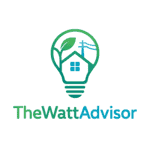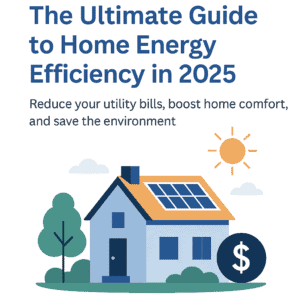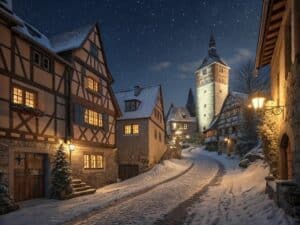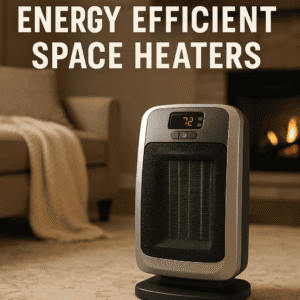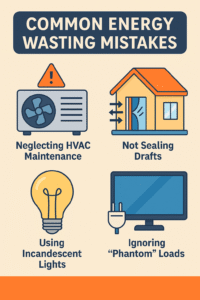How to Choose the Right Energy Efficient Light Bulbs (2025 Guide)
Why Energy Efficient Light Bulbs Matter
Choosing the right energy efficient light bulbs is one of the simplest yet most impactful changes you can make for a greener, lower-cost household. With lighting accounting for nearly 15% of a typical home’s electricity use, switching to energy efficient light bulbs can lead to substantial savings often with no compromise in brightness or quality.
In this guide, we’ll walk you through everything you need to know to confidently choose energy efficient light bulbs for your home. Whether you’re replacing outdated incandescent bulbs, building a smart home system, or upgrading lighting for ambiance, this comprehensive guide has you covered.
Table of Contents
- Understanding Energy Efficient Light Bulbs
- Types of Energy Efficient Light Bulbs
- Wattage vs Lumens: What to Look For
- Choosing the Right Color Temperature
- Bulb Shapes and Base Types
- Smart Bulbs vs Traditional LEDs
- How Long Do Energy Efficient Light Bulbs Last?
- Energy Star Ratings and Certifications
- Best Uses for Each Bulb Type
- Cost Comparison: Traditional vs Energy Efficient Light Bulbs
- Top 5 Energy Efficient Light Bulbs of 2025
- Where to Buy the Best Energy Efficient Light Bulbs
- Installation and Disposal Tips
- Common Mistakes to Avoid
Understanding Energy Efficient Light Bulbs
Energy efficient light bulbs are designed to use less electricity while providing the same amount of light as traditional bulbs. They typically include LED (Light Emitting Diode), CFL (Compact Fluorescent Lamp), and Halogen Incandescents.
Compared to traditional incandescent bulbs, energy efficient light bulbs can reduce electricity consumption by up to 80%. Additionally, they last much longer meaning fewer replacements and less waste.
At The Watt Advisor, we believe in smart energy choices, and switching to energy efficient light bulbs is one of the lowest-cost, highest-impact decisions you can make for your home.
Types of Energy Efficient Light Bulbs
Let’s break down the three main types:
1. LED Bulbs (Light Emitting Diode)
- Pros: Most energy efficient, long lifespan (up to 25,000 hours), instant brightness, cool to touch
- Cons: Slightly higher upfront cost
- Best for: All-purpose home lighting, smart home integration
2. CFL Bulbs (Compact Fluorescent Lamp)
- Pros: Affordable, moderate efficiency
- Cons: Contains mercury, takes time to brighten fully, less environmentally friendly
- Best for: Lamps and fixtures used for long periods
3. Halogen Incandescents
- Pros: Slightly more efficient than traditional bulbs, good color rendering
- Cons: Least efficient of the three, shorter lifespan
- Best for: Task lighting or dimmable fixtures
💡 Looking for a breakdown between LEDs and CFLs? Check out our guide on Common Energy Wasting Mistakes for more lighting myths and facts.

Wattage vs Lumens: What to Look For
In the age of energy efficient light bulbs, lumens, not watts, are the real measure of brightness.
- Lumens (lm): Measure of brightness
- Watts (W): Measure of energy consumption
A 60-watt incandescent is roughly equivalent to:
- 800 lumens from an LED using only 8–12 watts
- 800 lumens from a CFL using around 13–15 watts
Always check the packaging for lumens if you’re replacing existing bulbs.
Choosing the Right Color Temperature
Color temperature (measured in Kelvin, or K) influences ambiance and comfort. Here’s what you need to know:
| Temperature (K) | Color | Ideal For |
|---|---|---|
| 2700–3000K | Warm White | Bedrooms, Living Rooms |
| 3500–4100K | Cool White | Kitchens, Bathrooms |
| 5000–6500K | Daylight | Offices, Garages |
Smart energy efficient light bulbs often let you adjust color temperature based on time of day.
Bulb Shapes and Base Types
Choosing the correct shape and base ensures compatibility:
- A19: Standard shape for most household uses
- BR30/BR40: Great for recessed or track lighting
- Candelabra (E12): For decorative lamps and chandeliers
Double-check your fixture for base type (e.g., E26 medium base, GU10 twist-lock) to avoid compatibility issues.
Smart Bulbs vs Traditional LEDs
Smart bulbs are energy efficient light bulbs with built-in Wi-Fi or Bluetooth controls.
Pros of Smart Bulbs:
- App or voice control (Alexa, Google Home)
- Automated schedules and scenes
- Energy tracking in some models
Cons:
- Slightly higher cost
- Require consistent network connection
Smart bulbs can boost energy savings by reducing idle light usage and scheduling lighting based on occupancy or time.
How Long Do Energy Efficient Light Bulbs Last?
Here’s a quick comparison:
- Incandescents: ~1,000 hours
- CFLs: ~8,000 hours
- LEDs: 15,000–25,000+ hours
If you’re tired of constantly changing bulbs, LEDs are the clear winner.
Energy Star Ratings and Certifications
Always look for:
- ENERGY STAR label
- California Title 20/24 compliance
- RoHS certification (for environmental safety)
Certified energy efficient light bulbs save ~20% more energy than standard non-rated LEDs.
Best Uses for Each Bulb Type
- LEDs: Versatile, works well for most locations including smart lighting
- CFLs: Good for enclosed fixtures and steady-use lamps
- Halogens: Better for dimmable lighting where color rendering matters
Cost Comparison: Traditional vs Energy Efficient Light Bulbs
Let’s do the math over 10 years (assuming 3 hours/day usage):
| Bulb Type | Cost | Energy Use | Lifespan | Total Cost |
|---|---|---|---|---|
| Incandescent | $1 | 60W | 1,000 hrs | ~$130 |
| CFL | $2 | 13W | 8,000 hrs | ~$30 |
| LED | $4 | 9W | 25,000 hrs | ~$20 |
💰 That’s a huge saving when multiplied across every room.

Top 5 Energy Efficient Light Bulbs of 2025
- Philips Hue White Ambiance LED
- Dimmable, smart compatible, long lifespan
- 💡 Ideal for smart homes
- Cree 60W Equivalent Daylight LED
- Excellent brightness, affordable
- 💡 Perfect for kitchens and bathrooms
- GE Relax LED Soft White
- Warm glow for cozy areas
- 💡 Best for bedrooms
- Sylvania Smart+ Wi-Fi LED
- No hub needed, app controlled
- 💡 Great for automation
- Amazon Basics LED Light Bulbs (Pack of 16)
- High value, reliable performance
- 💡 Perfect for whole-home upgrades
Where to Buy the Best Energy Efficient Light Bulbs
We recommend:
- Amazon
- Home Depot
- Lowe’s
- Philips, Cree, and GE brand sites
🔗 Read our related post on Top 5 Smart Plugs for Energy Savings for complementary automation ideas.
Installation and Disposal Tips
- Always turn off the power before replacing bulbs.
- Use gloves for CFLs—handle with care.
- Dispose CFLs at hazardous waste locations (they contain mercury).
- Recycle LED bulbs at local centers or hardware stores.
Common Mistakes to Avoid
- Choosing brightness by wattage instead of lumens
- Using non-dimmable bulbs in dimmable fixtures
- Ignoring base type compatibility
- Skipping ENERGY STAR labels
- Not using timers or automation features
Final Thoughts
Switching to energy efficient light bulbs is one of the easiest yet most powerful ways to reduce your electricity bills and support a sustainable future. Whether you opt for smart LED bulbs or basic ENERGY STAR-rated lights, the benefits add up—longer life, lower energy use, and better quality lighting throughout your home.
Remember, every bulb you upgrade is a step toward greater efficiency. Combine them with smart home devices or energy-saving window treatments for maximum impact.
This post was on How to Choose the Right Energy Efficient Light Bulbs (2025 Guide)
